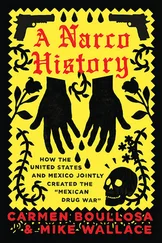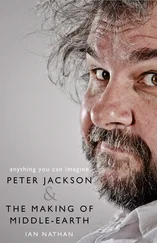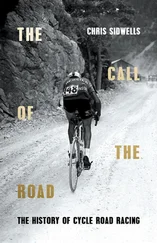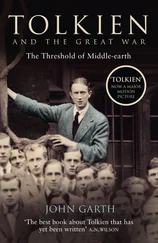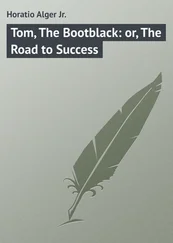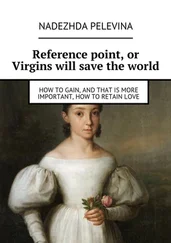However, both with elves and with dwarves there is one further factor to which Tolkien gave great weight; and that is literary art. No matter how many cross-references he could find and use, it looks as if he gave greatest weight and longest consideration to single poems, tales, phrases, images, using these as the centre of his portrayals of whole races or species. Naturally it is a speculative business to identify these, but I would suggest that the ‘master-text’ for Tolkien’s portrayal of the elves is the description of the hunting king in Sir Orfeo; and for the dwarves is the account of the Hjaðnin-gavíg , the ‘Everlasting Battle’, in Snorri’s Edda. These give further the ‘master-qualities’ of, respectively, evasiveness and revenge.
To take the simpler one first, the story of the ‘Everlasting Battle’ is as follows: once upon a time there was a king called Högni, whose daughter was Hildr. She, however, was abducted in his absence (some versions say seduced by a master-harper) by a pirate king called Hethinn. Högni pursued them and caught up at the island of Hoy in the Orkneys. Here Hildr tried to make a reconciliation, warning her father that Hethinn was ready to fight. Högni ‘answered his daughter curtly’. As the two sides draw up to each other, though, Hethinn makes a better and more courteous offer. But Högni refuses, saying: ‘Too late have you made this offer of coming to terms, for now I have drawn Dáinsleif which the dwarves made, which must kill a man every time it is drawn, and never turns in the stroke, and no wound heals where it makes a scratch.’ Unintimidated by words (like most Vikings) Hethinn shouts back that he calls any sword good that serves its master, and the battle is on. Every day the men fight, every night Hildr wakes them by witchcraft, so it will go to Doomsday. 7
This story is one, evidently, of remorseless pride flaring only in taciturnity; its centre is Högni’s decision to fight rather than look for a moment as if he could be bought; the ‘objective correlative’ of pride and decision is the sword Dáinsleif, the ‘heirloom of Dáin’, which the dwarves made and which knows no mercy. The sword Tyrfing in the Saga of King Heidrek edited by Christopher Tolkien is virtually identical – dwarf-made, cursed, remorseless, leading to murder between close relatives and the final lament, ‘It will never be forgotten; the Norns’ doom is evil’. These qualities, it seems, are those which Tolkien chose and developed for his dwarves. Thorin and Company act out of revenge as well as greed in The Hobbit , the long and painful vengeance of Thráin for Thrór is the centre of what we are told of the dwarves in Appendix A of The Lord of the Rings, Dáin Ironfoot himself incarnates in Tolkien’s Middle-earth the whole tough, fair, bitter, somehow unlucky character of the dwarvish race. 8 It is not too much to say that the ‘inspiration’ of their portrayal as opposed to the more laborious element of ‘invention’, springs directly from Snorri and the Hjaðningavíg and ‘Dáinsleif which the dwarves made’. To use Tolkien’s phrase, this was a ‘fusion-point of imagination’, once met never forgotten.
As for the elves, their fusion or kindling-point would seem to be some twenty or thirty lines from the centre of the medieval poem of Sir Orfeo , itself a striking example of the alchemies of art. In origin this is only the classical story of Orpheus and Eurydice, but the fourteenth-century poet (or maybe some forgotten predecessor) has made two radical changes to it: one, the land of the dead has become elf-land, from which the elf-king comes to seize Dame Heurodis; two, Sir Orfeo, unlike his classical model, is successful in his quest and bears his wife away, overcoming the elf-king by the mingled powers of music and honour. The poem’s most famous and original passage is the image of the elves in the wilderness, seen again and again by Orfeo as he wanders mad and naked, looking for his wife, but never certainly identified as hallucinations, phantoms, or real creatures on the other side of some transparent barrier which Orfeo cannot break through. To quote Tolkien’s translation:
There often by him would he see,
when noon was hot on leaf and tree,
the king of Faerie with his rout
came hunting in the woods about
with blowing far and crying dim,
and barking hounds that were with him;
yet never a beast they took nor slew,
and where they went he never knew … ( SGPO pp. 129–30)
Many hints from this took root in Tolkien’s mind: the shadow-army with its echoing horns which was to follow Aragorn from the ‘paths of the dead’, the ‘dim blowing of horns’ as a ‘great hunt’ goes past the silent dwarves in Mirkwood in The Hobbit, and in The Hobbit again the image of the fierce, proud, impulsive, honourable elf-king who imprisons Thorin but will take no advantage in the end even of Bilbo. Stronger than anything, though, is the association of the elves with the wilderness – an idea corroborated to Tolkien by the many Anglo-Saxon compounds such as ‘wood-elf’, ‘water-elf’, ‘sea-elf’ and so on – and with the music of the harp, the instrument by which Sir Orfeo wins back his wife. It may even have seemed significant to Tolkien that in Sir Orfeo the elves freed and rewarded their harper-enemy for his skill, while in some versions of the Hjaðningavíg the dwarvish weapon Dáinsleif condemns Hjarrandi (the Northern Orpheus) not just to death but to death everlastingly repeated. A whole conflict of temperament between two species is summed up in the detail, and a conflict of style. However, the further one traces Tolkien’s debt to ancient texts and fragments, in this matter, the more one realises how easy it was for him to feel that a consistency and a sense lay beneath the chaotic ruin of the old poetry of the North – if only someone would dig it out. To quote Shakespeare’s observations on another Enchanted Wood which sensible people can make nothing of (in A Midsummer Night’s Dream V i):
But all the story of the night told over,
And all their minds transfigured so together,
More witnesseth than fancy’s images,
And grows to something of great constancy;
But howsoever, strange and admirable.
I do not suppose Tolkien would have liked the down-grading of ‘fancy’, nor the comedy of Peaseblossom, Cobweb, Moth and Mustardseed. Bully Bottom, though, has a Tolkienish bravura; and Hippolyta’s feeling that ‘there must have been something in it’ was his own.
It was by similar processes of ‘reconstruction’ that Tolkien arrived at his ‘orcs’ and ‘wargs’, later his ‘ents’ and ‘woses’. * None of the foregoing, however, offers any help at all with ‘hobbits’. If ‘the word authenticates the thing’, they are not authentic, for ‘hobbit’ is in no sense an ancient word. Nor indeed does their genesis seem to have had any element of ‘invention’ in it; it was pure ‘inspiration’, without any trace of thought at all. The moment of the word’s arrival has in fact been recorded by Tolkien, and subsequently by Humphrey Carpenter:
It was on a summer’s day, and he was sitting by the window in the study at Northmoor Road, laboriously marking School Certificate exam papers. Years later he recalled: ‘One of the candidates had mercifully left one of the pages with no writing on it (which is the best thing that can possibly happen to an examiner) and I wrote on it: “In a hole in the ground there lived a hobbit.” Names always generate a story in my mind. Eventually I thought I’d better find out what hobbits were like. But that’s only the beginning.’ ( Biography , p. 230) 9
Читать дальше

